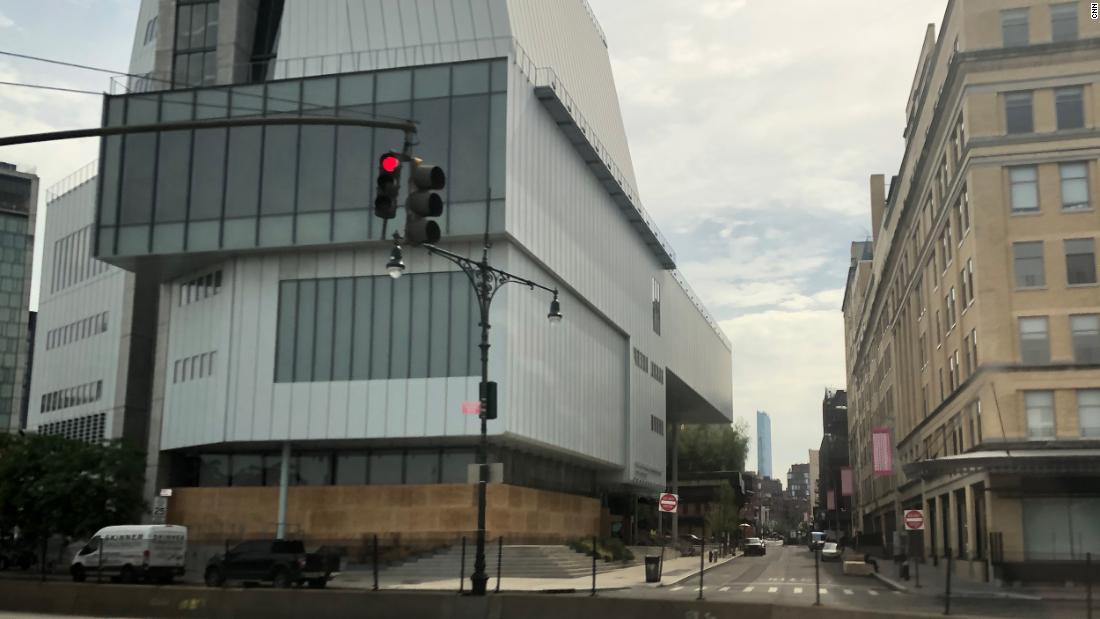While most of the protests and marches have been peaceful, civil unrest has resulted in looting and material damage in cities like New York.
There are 130 museums in the five boroughs of New York City, according to the city’s data, including some renowned museums that house the work of world-renowned artists.
Vincent Van Gogh’s starry night is located not far from Claude Monet’s water lily pond in the halls of the Museum of Modern Art (MoMa). The Solomon R. Guggenheim Museum and the Metropolitan Museum of Art both house Pablo Picasso’s paintings and other priceless collections.
And for many, museums are a cultural paradise.
‘It’s not too late, but you have to have a plan’
The Metropolitan Museum of Art alone sees over 7 million visitors in a year.
“Many people in the city see museums as safe places to converse significantly on difficult subjects. Art is sometimes a bridge to do it,” Marianne Lamonaca told CNN.
Lamonaca is director of the associated gallery and chief curator at the Bard Graduate Center in New York and president of the foundation board of the Association of Art Museum Curators.
Cultural institutions must have a plan and coordinate with local agencies including federal law enforcement agencies to plan potential emergencies, art protection expert Stevan Layne told CNN.
Layne, founding director of the International Foundation for Cultural Property Protection, is one of the security experts who works with cultural institutions across the country whose leaders are trying to protect their priceless but currently empty institutions.
“We’re saying it’s not too late, but you have to have a plan. The police are overwhelmed, they can’t be everywhere. They can’t handle everything,” he said.
Most major institutions often have secure storage spaces in another location to protect their most valuable works, Layne said. Now the IFCPP is warning museums to remove the artifacts from the main floor because it would probably be the most at risk in the event of a break-in.
At least one museum in town, the Whitney Museum of American Art, has floor-to-ceiling windows.
Layne says he tells his colleagues to take these precautions if they can, but the cost is high. And for those institutions that rely on daily ticket revenue, they probably can’t afford the resources because of coronavirus-related losses.
Debate on controversial cultural installations
In recent years, controversial cultural installations in museums and public spaces have been at the center of the debate.
“It has always been a problem, what to do with offensive monuments for certain groups. Today is no more different than in Charlottesville in 2017,” said Margaret Holben Ellis, president and colleague of the American Institute for Conservation (AIC) CNN.
Conservatives are those who maintain cultural heritage installations but repair them even when they are damaged.
Conservatives have recently been harassed to repair damaged installations, Holben Ellis told CNN.
“We have received reports that conservatives feel threatened – or have been threatened – in the exercise of their professional duties to protect and preserve cultural heritage. We must keep our members, as well as monuments, safe from damage and harassment. professionalism the obligation to make decisions also has an emotional impact on conservatives who must remain neutral in the performance of their duties, “said Holben Ellis.
Conservatives operate according to a code of ethics to preserve all cultural heritage, George Wheeler, associate professor of historical conservation at the University of Pennsylvania told CNN.
Conservatives and directors could consider keeping installations in public places as protests continue every night, Wheeler suggests.
“These things can be taken into consideration, but how and when we face these problems.”
Wheeler warns against the rapid removal of public installations and monuments, as politicians have done in some cities.
“The decision can affect the conservative’s safety, influence society’s perception and those certain sets of decisions may not be easily reversed,” said Wheeler.
“The conscious destruction of a monument because of its symbolism is also an option. This is the extreme on the spectrum of conservation – from keeping something exactly as always to destroying it,” said Wheeler.
How we use our voices
Both The Met and The Whitney have declined to comment on their security protocols, but they and many other New York museums have posted on their social media pages condemning George Floyd’s death in solidarity with the protesters.
The Guggenheim Museum is promoting the work of African American artists who have faced racial discrimination in their works.
Likewise, the city’s public design committee posted the promotion of black artists on Twitter.
MoMa has released what they call an incomplete list of resources and organizations to fight racism and support justice and equality.
“I think museums would like to step up right now and communicate,” Lamonaca told CNN.
The curators’ question now, says Lamonaca, is “how can we use our voices, our position in the community to bring people together and converse significantly with difficult topics.”

Coffee enthusiast. Travel scholar. Infuriatingly humble zombie fanatic. Thinker. Professional twitter evangelist.








